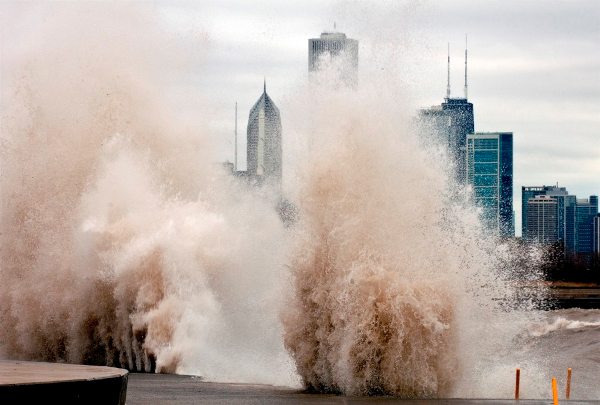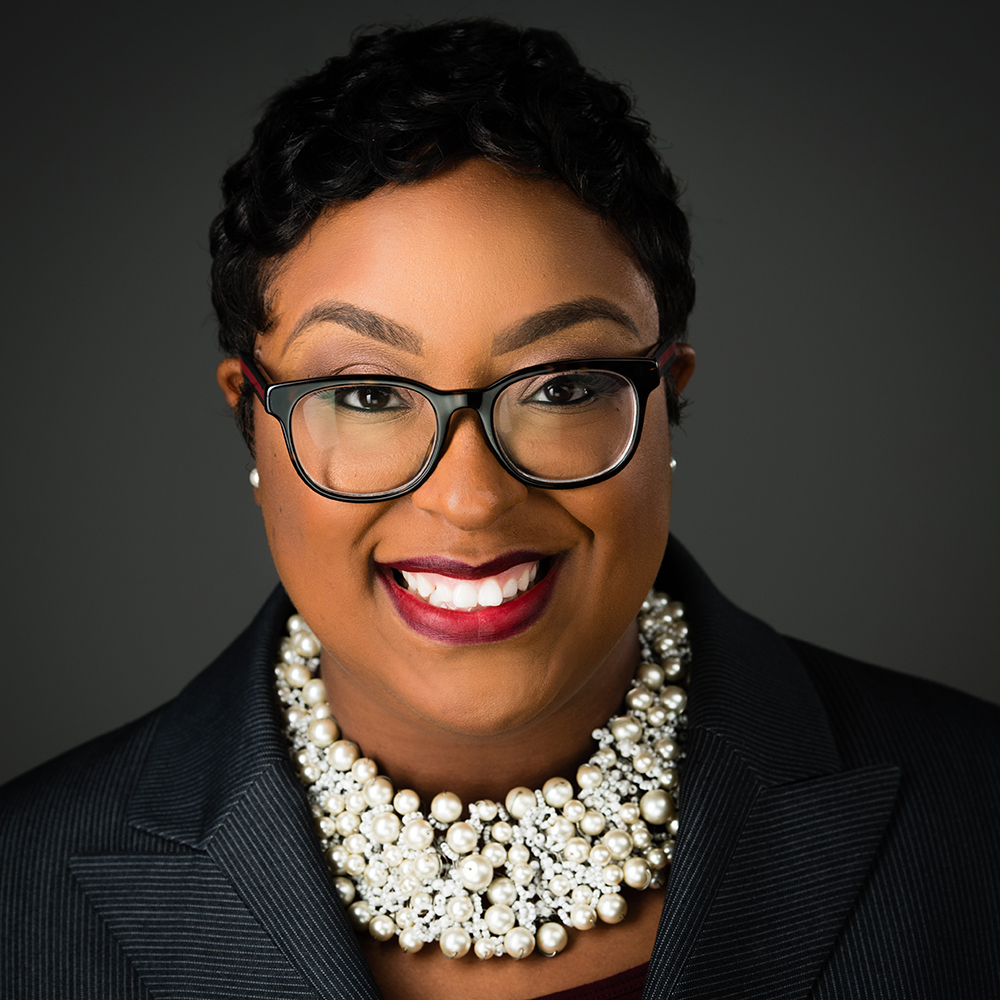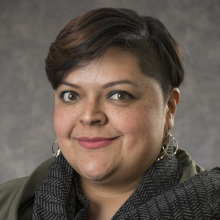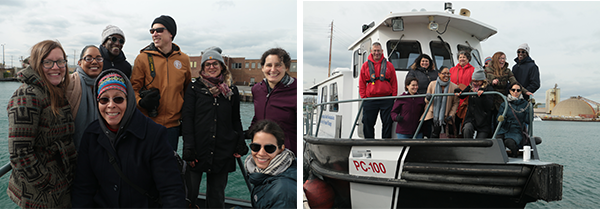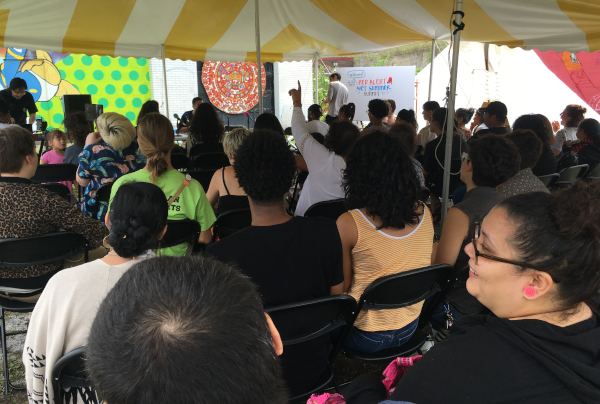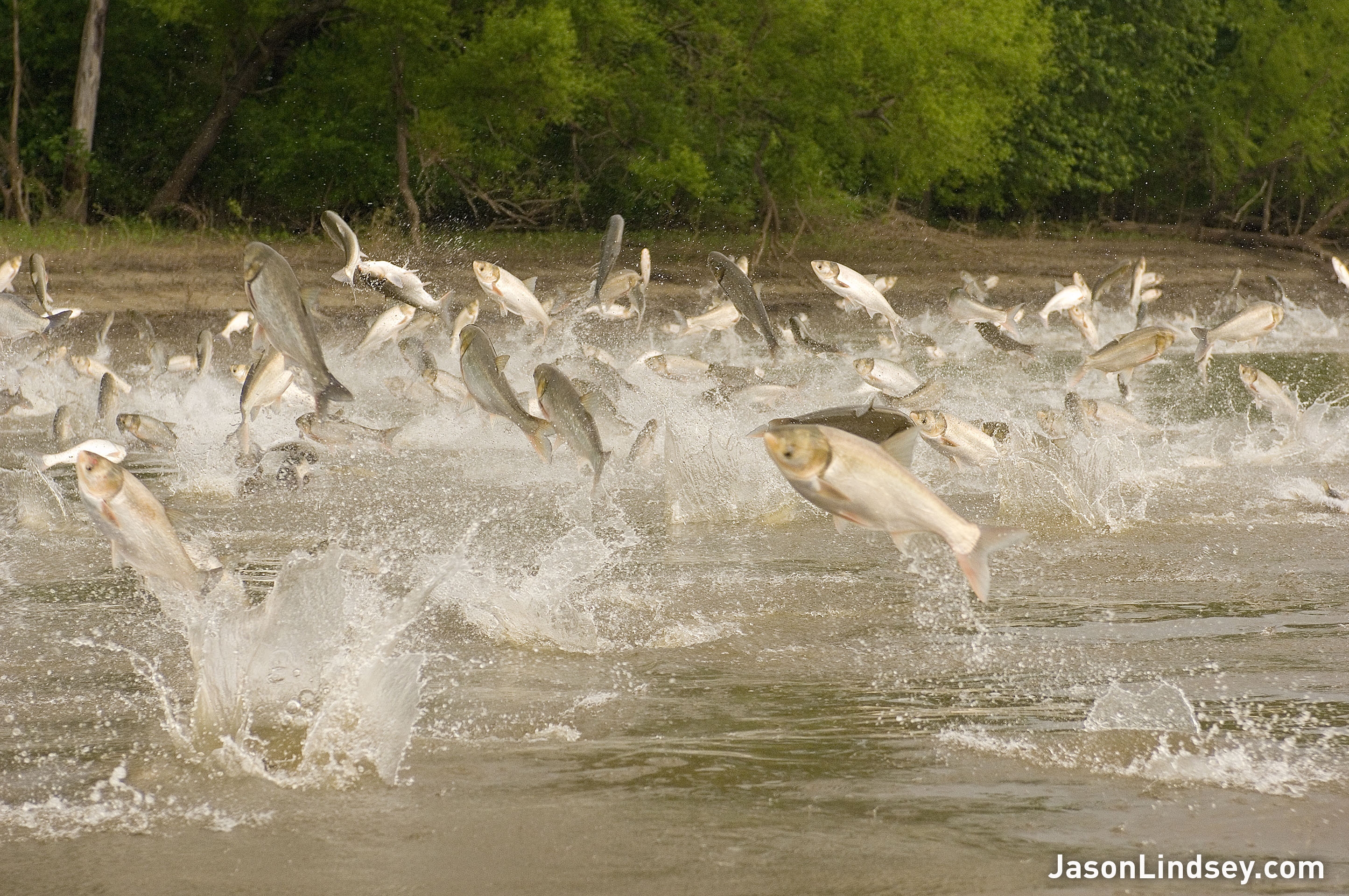Dive into Our Lakes Chat Summer Series
Over the summer, the Alliance hosted our Lakes Chat Summer Series. We chatted with a special guest each week about Great Lakes issues ranging from infrastructure to water levels – and what it all means for you and your community.
Go ahead, dive into some timely topics below.
The post Dive into Our Lakes Chat Summer Series appeared first on Alliance for the Great Lakes.
News – Alliance for the Great Lakes
News – Alliance for the Great Lakes
https://greatlakes.org/2021/10/dive-into-our-lakes-chat-summer-series/


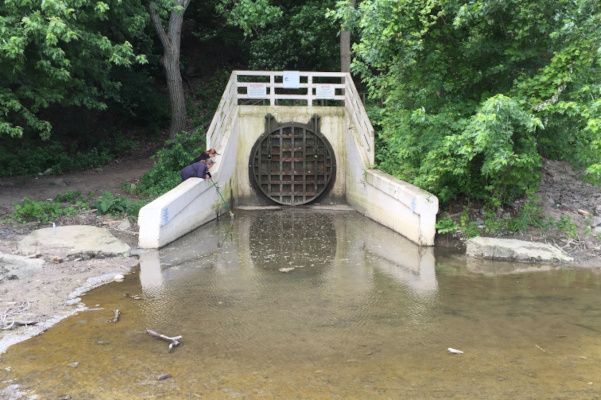
 “Brian O’Neill spoke at more events this past year than any other Alliance Ambassador,” says Olivia Reda, Alliance Volunteer Engagement Coordinator. “He is an active participant in our deep dive trainings and reading discussions. And when the Alliance showed Ambassadors our Voter Toolkit in 2020, Brian followed up with creative ideas on how Ambassadors could effectively distribute the information. I am very happy to announce him as our Alliance Ambassador Volunteer of the Year.”
“Brian O’Neill spoke at more events this past year than any other Alliance Ambassador,” says Olivia Reda, Alliance Volunteer Engagement Coordinator. “He is an active participant in our deep dive trainings and reading discussions. And when the Alliance showed Ambassadors our Voter Toolkit in 2020, Brian followed up with creative ideas on how Ambassadors could effectively distribute the information. I am very happy to announce him as our Alliance Ambassador Volunteer of the Year.” “Mike Jabot is a long-time Team Leader who led 6 cleanups last year totaling 58 pounds,” says Tyrone Dobson, Alliance Senior Volunteer Engagement Manager. “He also helped us test our website over the course of two months. His feedback ultimately helped us create the great website we are using today. I am incredibly grateful for his work and I am happy to award him the Adopt-a-Beach Volunteer of the Year.”
“Mike Jabot is a long-time Team Leader who led 6 cleanups last year totaling 58 pounds,” says Tyrone Dobson, Alliance Senior Volunteer Engagement Manager. “He also helped us test our website over the course of two months. His feedback ultimately helped us create the great website we are using today. I am incredibly grateful for his work and I am happy to award him the Adopt-a-Beach Volunteer of the Year.” “Victoria Sullivan, one of our YPC members, took the idea of the bingo night and helped the YPC bring this fundraiser from idea to reality in a short number of weeks. Organizing this effort was no small feat,” says Dobson. “Her leadership on this project made the difference and I am proud to recognize Victoria as the Young Professional Council Volunteer of the Year.”
“Victoria Sullivan, one of our YPC members, took the idea of the bingo night and helped the YPC bring this fundraiser from idea to reality in a short number of weeks. Organizing this effort was no small feat,” says Dobson. “Her leadership on this project made the difference and I am proud to recognize Victoria as the Young Professional Council Volunteer of the Year.”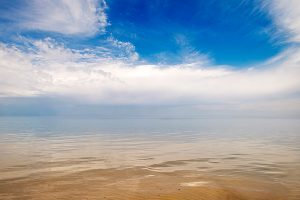
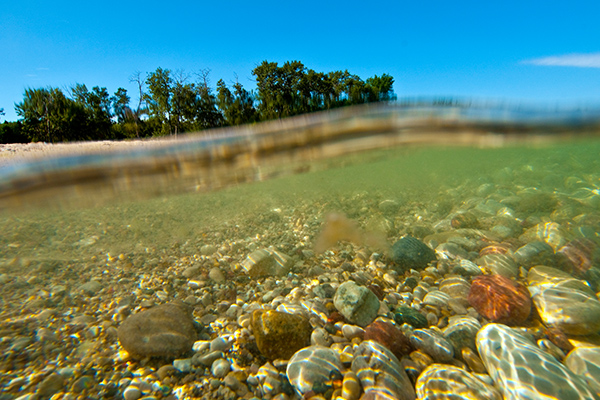

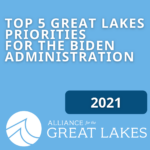 As the nation faces unprecedented challenges, clean water is more important than ever. The deepening COVID-19 crisis reminds us daily of the deep connection between clean water and public health. Investments in clean water programs support getting people back to work and protect public health, a win for everyone.
As the nation faces unprecedented challenges, clean water is more important than ever. The deepening COVID-19 crisis reminds us daily of the deep connection between clean water and public health. Investments in clean water programs support getting people back to work and protect public health, a win for everyone. Low-income communities and communities of color are disproportionately impacted by pollution. Environmental justice seeks to address this unfair distribution of pollution and repair the harm that it causes. It requires the fair treatment and meaningful involvement of people of color and low-income communities in the development, implementation, and enforcement of environmental laws, regulations, and policies. The Great Lakes region has the opportunity to lead the way, to show how environmental justice can be achieved. There are specific actions the administration can take to address environmental justice in the Great Lakes region right now.
Low-income communities and communities of color are disproportionately impacted by pollution. Environmental justice seeks to address this unfair distribution of pollution and repair the harm that it causes. It requires the fair treatment and meaningful involvement of people of color and low-income communities in the development, implementation, and enforcement of environmental laws, regulations, and policies. The Great Lakes region has the opportunity to lead the way, to show how environmental justice can be achieved. There are specific actions the administration can take to address environmental justice in the Great Lakes region right now. Clean water is a basic need. No one should be without clean, safe, affordable water in their home. No one should have to worry about sewage backing up into their basement or community flooding that damages property. Yet, communities across the Great Lakes region continue to grapple with crumbling, antiquated drinking water and wastewater infrastructure. The longer we wait, the harder and more expensive these problems will be to solve.
Clean water is a basic need. No one should be without clean, safe, affordable water in their home. No one should have to worry about sewage backing up into their basement or community flooding that damages property. Yet, communities across the Great Lakes region continue to grapple with crumbling, antiquated drinking water and wastewater infrastructure. The longer we wait, the harder and more expensive these problems will be to solve.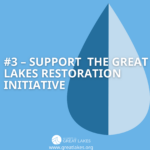 The Great Lakes Restoration Initiative (GLRI) provides funding for on-the-ground restoration projects, from wetland restoration to cleaning up toxic hotspots, throughout the Great Lakes region. In addition to improving the Great Lakes ecosystem,
The Great Lakes Restoration Initiative (GLRI) provides funding for on-the-ground restoration projects, from wetland restoration to cleaning up toxic hotspots, throughout the Great Lakes region. In addition to improving the Great Lakes ecosystem,  Invasive Asian Carp pose a clear threat to the Great Lakes. Established populations of these fish are only 50 miles from Chicago and Lake Michigan. But it’s not too late to prevent them from reaching the lakes.
Invasive Asian Carp pose a clear threat to the Great Lakes. Established populations of these fish are only 50 miles from Chicago and Lake Michigan. But it’s not too late to prevent them from reaching the lakes.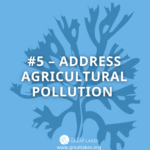 Nutrient pollution that fuels harmful algal blooms is a significant threat to the region’s drinking water, quality of life, and economic well-being. Runoff from agricultural lands is a significant contributor to the phosphorus pollution that drives these blooms.
Nutrient pollution that fuels harmful algal blooms is a significant threat to the region’s drinking water, quality of life, and economic well-being. Runoff from agricultural lands is a significant contributor to the phosphorus pollution that drives these blooms. As the nation faces unprecedented challenges, clean water is more important than ever. The deepening COVID-19 crisis reminds us daily of the deep connection between clean water and public health. Investment in clean water programs supports getting people back to work and protects public health, a win for everyone.
As the nation faces unprecedented challenges, clean water is more important than ever. The deepening COVID-19 crisis reminds us daily of the deep connection between clean water and public health. Investment in clean water programs supports getting people back to work and protects public health, a win for everyone. Low-income communities and communities of color are disproportionately impacted by pollution. Environmental justice seeks to address this unfair distribution of pollution and repair the harm that it causes. It requires the fair treatment and meaningful involvement of people of color and low-income communities in the development, implementation, and enforcement of environmental laws, regulations, and policies. The Great Lakes region has an opportunity to help lead the way.
Low-income communities and communities of color are disproportionately impacted by pollution. Environmental justice seeks to address this unfair distribution of pollution and repair the harm that it causes. It requires the fair treatment and meaningful involvement of people of color and low-income communities in the development, implementation, and enforcement of environmental laws, regulations, and policies. The Great Lakes region has an opportunity to help lead the way.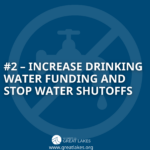 Clean water is a basic need. No one should be without clean, safe, affordable water in their home. No one should have to worry about sewage backing up into their basement or community flooding that damages property. Yet, communities across the Great Lakes region continue to grapple with crumbling, antiquated drinking water and wastewater infrastructure. The longer we wait, the harder and more expensive these problems will be to solve.
Clean water is a basic need. No one should be without clean, safe, affordable water in their home. No one should have to worry about sewage backing up into their basement or community flooding that damages property. Yet, communities across the Great Lakes region continue to grapple with crumbling, antiquated drinking water and wastewater infrastructure. The longer we wait, the harder and more expensive these problems will be to solve. The Great Lakes Restoration Initiative (GLRI) provides funding for on-the-ground restoration projects, from wetland restoration to cleaning up toxic hotspots, throughout the Great Lakes region. In addition to improving the Great Lakes ecosystem,
The Great Lakes Restoration Initiative (GLRI) provides funding for on-the-ground restoration projects, from wetland restoration to cleaning up toxic hotspots, throughout the Great Lakes region. In addition to improving the Great Lakes ecosystem,  To keep these fish out of the Great Lakes, the U.S. Army Corps of Engineers has proposed the construction of additional invasive Asian Carp measures at the Brandon Road Lock and Dam, located near Joliet, Illinois. After years of study and public debate, this project has been identified as the best step in stopping the fish from entering the Great Lakes and allowing waterborne commerce to continue moving through the lock. The project has wide bipartisan support and is authorized by Congress. To continue efforts to build Asian carp protections at the Brandon Road Lock and Dam:
To keep these fish out of the Great Lakes, the U.S. Army Corps of Engineers has proposed the construction of additional invasive Asian Carp measures at the Brandon Road Lock and Dam, located near Joliet, Illinois. After years of study and public debate, this project has been identified as the best step in stopping the fish from entering the Great Lakes and allowing waterborne commerce to continue moving through the lock. The project has wide bipartisan support and is authorized by Congress. To continue efforts to build Asian carp protections at the Brandon Road Lock and Dam: Nutrient pollution that fuels harmful algal blooms is a significant threat to the region’s drinking water, quality of life, and economic well-being. Runoff from agricultural lands is a significant contributor to the phosphorus pollution that drives these blooms.
Nutrient pollution that fuels harmful algal blooms is a significant threat to the region’s drinking water, quality of life, and economic well-being. Runoff from agricultural lands is a significant contributor to the phosphorus pollution that drives these blooms.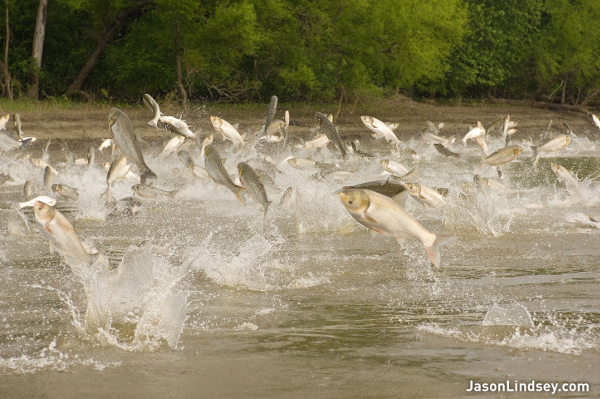
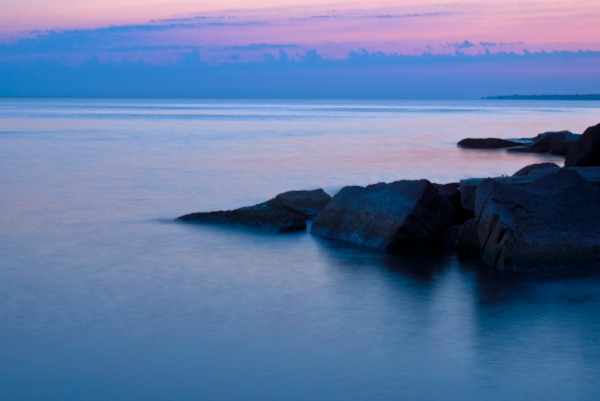
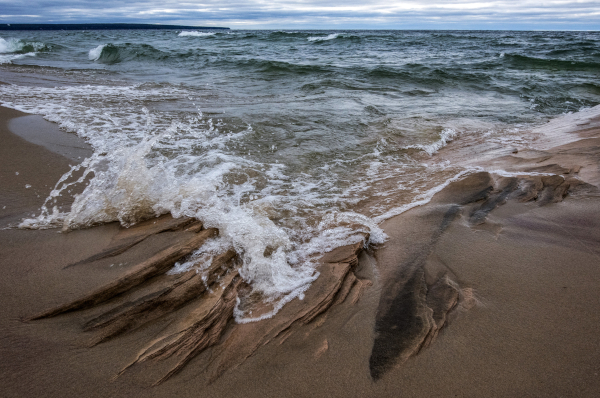
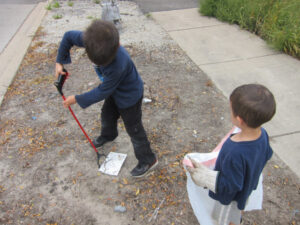
 “This was really our comeback event,” says Matt Belcher, a Chicago chapter leader for the national service group
“This was really our comeback event,” says Matt Belcher, a Chicago chapter leader for the national service group  In Cleveland, Americorps volunteers Sara Morgan and Grace Vishnick had a similar experience. They organized about 50 people to clean Cleveland’s Euclid and Edgewater beaches for
In Cleveland, Americorps volunteers Sara Morgan and Grace Vishnick had a similar experience. They organized about 50 people to clean Cleveland’s Euclid and Edgewater beaches for 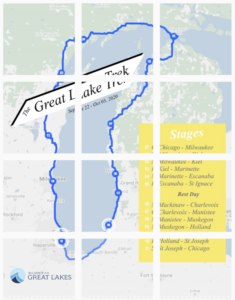 The most unusual outreach by an Ambassador during the pandemic is likely Tristyn Von Berg’s bike ride around Lake Michigan. Von Berg nicknamed his Trek commuter bike “Richard Gears” after his father. A South Africa native, he had recently moved to Chicago when he decided to make the 950-mile journey.
The most unusual outreach by an Ambassador during the pandemic is likely Tristyn Von Berg’s bike ride around Lake Michigan. Von Berg nicknamed his Trek commuter bike “Richard Gears” after his father. A South Africa native, he had recently moved to Chicago when he decided to make the 950-mile journey. Blair Tatrault became an ambassador after retiring a few years ago.
Blair Tatrault became an ambassador after retiring a few years ago.
